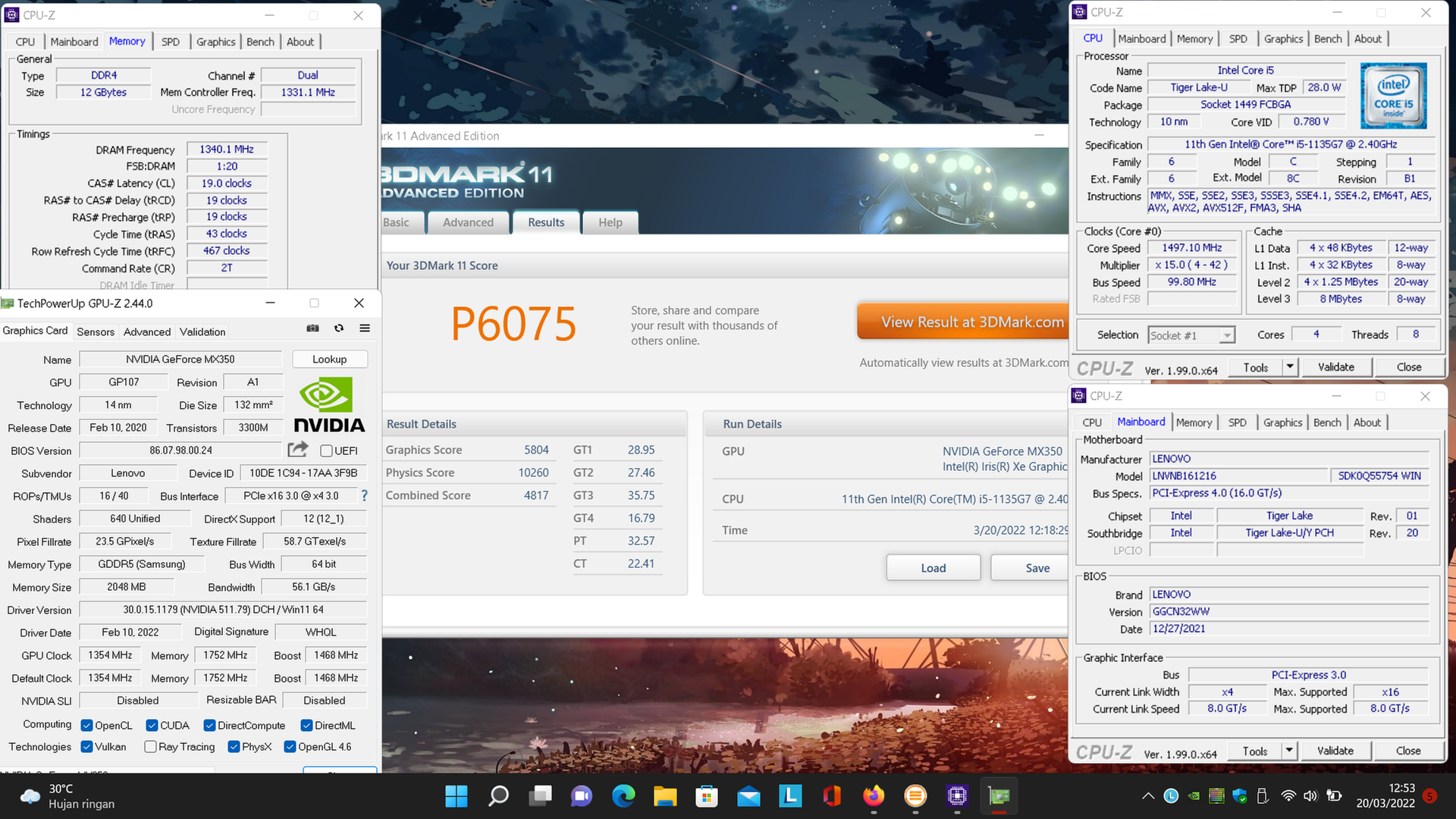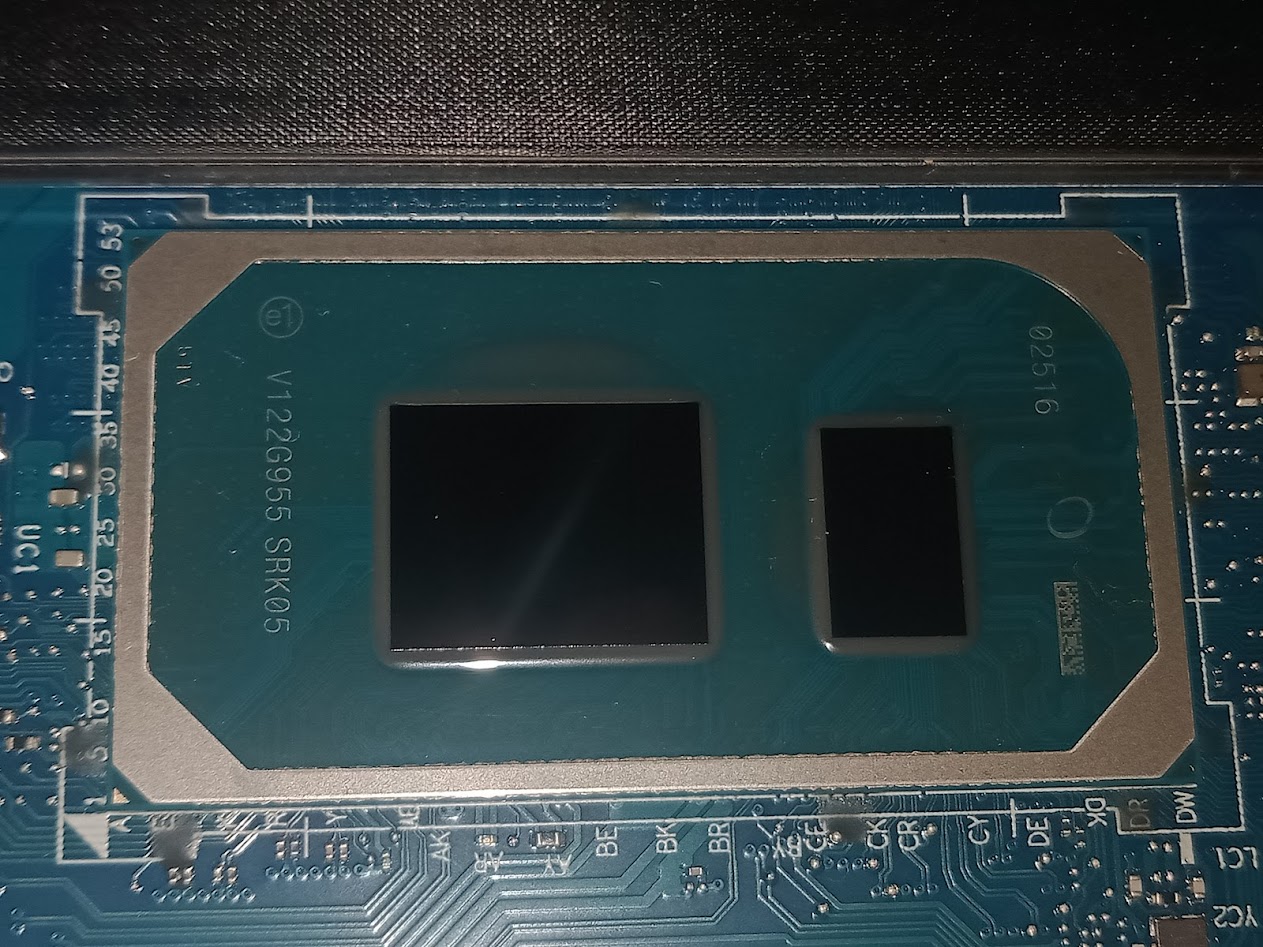3DMark11 - Physics score 10260 points with a i5-1135G7
Thursday, 01 January 1970 07:00 | Update at null
Media Gallery
Screenshot

Device, Setup, etc



URL
https://hwbot.org/submission/4966169https://bit.ly/3weObMb
Information Detail
Hardware: Intel Core i5 1135G7
Specs:CPUID : 11th Gen Intel(R) Core(TM) i5-1135G7 @ 2.40GHz
Architecture : x86
Codename : Tiger Lake-U
L3 Cache : 8MB
Clock : 2.40GHz - 4.20GHz
Core/Thread : 4/8
TDP : 28W
Technology : 10nm
Socket : FCBGA1449
IGPU : Intel Iris Xe Graphics Mobile G7
See more specification...
Software: 3DMark11 - Physics
Score: 10260 points
About: 3DMark11 - Physics3DMark 11 is a popular benchmark application designed to measure a system's performance in running DirectX 11-based games and applications. It was developed by UL Benchmark and is aimed primarily at Windows 7 operating systems and older generation hardware that still supports DirectX 11 graphics technology. As one of the longest-used test tools by tech enthusiasts and hardware professionals, 3DMark 11 provides a comprehensive overview of a system's graphics and computing capabilities.
The benchmark consists of several test scenarios, including graphics tests such as Deep Sea and High Temple that feature complex visual simulations with lighting effects, particles and tessellation. There are also physics tests that specifically measure CPU performance in running physical simulations, such as large-scale object and particle interactions. The last test is the combined test, which is a combined scenario that simultaneously taxes the CPU and GPU to measure their collaboration in situations that resemble real-life conditions when playing heavy games.
3DMark 11 provides a selection of quality presets such as Entry, Performance, and Extreme, which allow users to perform tests based on different levels of resolution and graphics complexity. This feature is very helpful in customizing the benchmark to the specifications of the hardware being tested, as well as providing relevant references for various user segments.
In this benchmark, the focus is on the Physics Score, which represents the CPU's ability to run physics simulations. This score is particularly important for assessing processor performance in the context of modern games that make heavy use of physics calculations for AI, environmental effects, and realistic animations. Physics Score is also often used as a reference in comparing CPU performance across generations or architectures.
Although newer versions of 3DMark are now available and support DirectX 12 or Vulkan, 3DMark 11 remains a relevant benchmark for testing older systems. Many users and communities still rely on this benchmark as a historical performance evaluation tool, system stability testing, and comparison for hardware with DirectX 11 support.
The Intel Core i5-1135G7 is a quad-core mobile processor introduced in late 2020 as part of Intel’s 11th generation Tiger Lake lineup. Designed for thin and light laptops, this CPU delivers a strong balance of performance, power efficiency, and modern features, making it a popular choice for both casual users and professionals. Featuring 4 cores and 8 threads through Hyper-Threading Technology, it operates at a base clock of 2.4 GHz and can reach up to 4.2 GHz with Intel Turbo Boost, ensuring smooth multitasking and snappy responsiveness for day-to-day applications.
Built using Intel’s advanced 10nm SuperFin process, the i5-1135G7 offers improved efficiency and thermal performance over previous 14nm generations. With a configurable TDP ranging from 12W to 28W, OEMs can adjust the performance envelope depending on the device’s thermal design. The standout feature of this processor is its integrated Intel Iris Xe Graphics, equipped with 80 Execution Units and a dynamic frequency of up to 1.3 GHz. Compared to older Intel UHD Graphics, Iris Xe brings a massive leap in performance, capable of handling casual gaming, 4K video playback, and GPU-accelerated workloads like video rendering or image editing.
In benchmark tests such as Cinebench R23, the i5-1135G7 scores around 5661 points (multi-core) and 1334 points (single-core), showcasing excellent performance for a low-power chip. These scores reflect its capability to handle modern productivity software, web-based workflows, and even creative tools like Adobe Photoshop or Premiere Pro though for heavier workloads, a higher-end CPU may still be recommended.
Real-world performance testing was done on a Lenovo IdeaPad Slim 3i 14ITL6, a budget-to-midrange laptop equipped with 12GB DDR4 3200MHz dual-channel memory (8+4 configuration). This setup, combined with Windows 10 and Windows 11 22H2, allows the i5-1135G7 to fully utilize its integrated GPU and high-speed memory interface for a snappy and responsive user experience.
Whether you're a student, a professional, or a casual user looking for a capable, energy-efficient processor, the Intel Core i5-1135G7 stands out as one of the best value choices in the ultrabook category.
Hardware Detail:
Device: Lenovo IdeaPad Slim 3i 14ITL6
RAM: 12GB DDR4 3200MHz Dual Channel (8+4)
OS: Windows 10, Windows 11 22H2
* Not Avaiable
